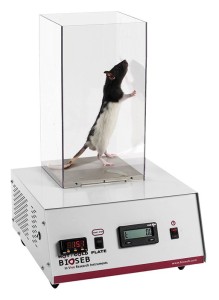Authors
E. Deval, J. Noël, N. Lay, A. Alloui, S. Diochot et al.
Lab
Institut de Pharmacologie Moléculaire et Cellulaire, UMR 6097 CNRS/Université de Nice-Sophia Antipolis, Sophia Antipolis, Valbonne, France.
Journal
The EMBO Journal
Abstract
Acid-sensing ion channels (ASICs) are cationic channels activated by extracellular acidosis that are expressed in both central and peripheral nervous systems. Although peripheral ASICs seem to be natural sensors of acidic pain (e.g., in inflammation, ischaemia, lesions or tumours), a direct demonstration is still lacking. We show that approximately 60% of rat cutaneous sensory neurons express ASIC3-like currents. Native as well as recombinant ASIC3 respond synergistically to three different inflammatory signals that are slight acidifications (approximately pH 7.0), hypertonicity and arachidonic acid (AA). Moderate pH, alone or in combination with hypertonicity and AA, increases nociceptors excitability and produces pain suppressed by the toxin APETx2, a specific blocker of ASIC3. Both APETx2 and the in vivo knockdown of ASIC3 with a specific siRNA also have potent analgesic effects against primary inflammation-induced hyperalgesia in rat. Peripheral ASIC3 channels are thus essential sensors of acidic pain and integrators of molecular signals produced during inflammation where they contribute to primary hyperalgesia.
BIOSEB Instruments Used
Cold Hot Plate Test (BIO-CHP)
Source :
http://www.ncbi.nlm.nih.gov/pmc/articles/PMC2585165/?tool=pubmed

 Pain - Thermal Allodynia / Hyperalgesia
Pain - Thermal Allodynia / Hyperalgesia Pain - Spontaneous Pain - Postural Deficit
Pain - Spontaneous Pain - Postural Deficit Pain - Mechanical Allodynia / Hyperalgesia
Pain - Mechanical Allodynia / Hyperalgesia Learning/Memory - Attention - Addiction
Learning/Memory - Attention - Addiction Physiology & Respiratory Research
Physiology & Respiratory Research











![Dynamic Weight Bearing 2.0 – Postural Module [Add-on]](https://bioseb.com/733-home_default/dynamic-weight-bearing-20-add-on-postural-module.jpg)
























 Pain
Pain Central Nervous System (CNS)
Central Nervous System (CNS) Neurodegeneration
Neurodegeneration Sensory system
Sensory system Motor control
Motor control Mood Disorders
Mood Disorders Other disorders
Other disorders Muscular system
Muscular system Joints
Joints Metabolism
Metabolism Cross-disciplinary subjects
Cross-disciplinary subjects CONFERENCES & MEETINGS
CONFERENCES & MEETINGS 